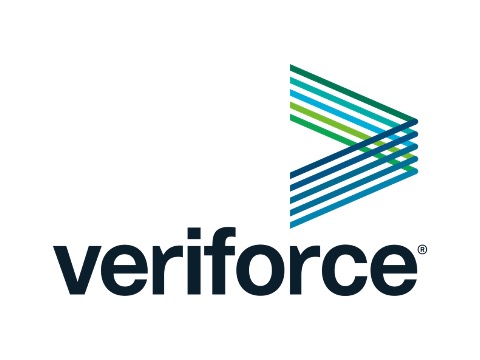What do the words performance, measurement and improvement mean to you?
As it relates to managing health, safety and environment (HSE) in an organization, many senior executives find these words tedious and threatening. The task is often left with someone who might be good with spreadsheets and inputting data, but not as good with knowing how to improve the measurement of an organization's safety performance. Leading and lagging indicators can help predict future risks based on past incidents, and it's a great place to start with managing and improving your HSE program.

How can organizations use data to help predict and mitigate future risks in the workplace?
Having the ability to estimate and measure risks allows for continuous improvement. Finding the ideal balance of safety versus risk in a workplace or on a worksite can be difficult, so understanding where you've been and where you want to go is the first step. Utilizing lagging and leading indicators and effectively measuring this data will help put your organization on the road to success.
Why does data matter?
A successful safety program is a result of effectively tracking, analyzing and reporting data to meet regulatory compliance requirements. Data is the driving force behind making informed decisions that will save lives and increase a company's bottom line.
What is a lagging indicator?
A lagging indicator is a metric used as a benchmark to measure the number and types of incidents that have occurred in an organization. It provides a clear picture of past mishaps - such as lost time, incident rates and workers' compensation costs. Lagging indicators are known as failure-focused measures. They can tell an organization how many people were injured and how much time was lost, but they can't tell you how well you're doing at preventing incidents and accidents.
Legendary coach Pat Riley once said, "Anytime you stop striving to get better, you're bound to get worse." And that applies just as much to a safety program as it does to a basketball team. Complacency is your worst enemy and to avoid it, you must ask yourself important questions to see if you're heading in the right direction.
What is a leading indicator?
Leading indicators are proactive measurements that help predict and prevent injury and illness in the workplace. These indicators focus on future safety performance and continuous improvement to help reduce risks. Leading indicators measure proactive employee activities and track what people are doing in the workplace to help prevent incidents. These measures include:
- Near misses
- Behavioural observations
- Safety training (results of training quizzes)
- Ergonomic opportunities identified and corrected
- Reduction of musculoskeletal disorders (MSD) risk factors
- Employee perception surveys
- Department safety meetings
- Safety audits

By taking deliberate and measured actions that can prevent fatalities, injuries and illnesses, employers demonstrate commitment to maintaining a socially responsible workplace that values workers and safety culture.
The Benefits of Using Leading Indicators
Leading indicators can play a vital role in preventing worker fatalities, injuries, and illnesses, as well as strengthening health and safety outcomes in the workplace and on a worksite. Using leading indicators as a tool for achieving these goals provides employers with a substantial advantage over the competition as it improves safety culture and the bottom line.
An employer's guide from OSHA shows how leading indicators can optimize organizational performance in various ways. Employers may find that leading indicators can:
- Prevent workplace injuries and illnesses
- Reduce costs associated with incidents
- Improve productivity and overall organizational performance
- Optimize safety and health performance
- Raise worker participation
By taking deliberate and measured actions that can prevent fatalities, injuries and illnesses, employers demonstrate commitment to maintaining a socially responsible workplace that values workers and safety culture. By strengthening key elements of health and safety programs, employers can also improve overall organizational performance.
The role of Leadership
Having support from the top down in any organization is crucial in transitioning to a successful safety program and culture. And with many employers relying on third parties in their supply chains, safety is also a priority when hiring third-party suppliers, contractors and vendors. Building an acceptable level of trust with a distributed workforce is imperative to develop a global safety culture.
How does an organization use leading indicators to meet compliance requirements?
Managing risk at your workplace requires thinking about what might harm your employees and taking reasonable steps to prevent it from happening. Successful risk management programs encompass planning, implementing, monitoring and optimizing operational processes in health protection and occupational safety.
It’s also essential to understand how your supply chain manages risk because an incident within your supply chain can impact not only your workforce but your bottom line as well. To establish a safe and hazard-free workplace for employees, visitors and suppliers, companies need to ensure that processes and controls are in place.
What is the best way to track and manage data?
Paper and spreadsheets are a thing of the past. The most straightforward, effective and secure way to collect and track data from employees and suppliers is with risk management software. By collecting and analyzing the data from leading events such as the percentage of the workforce involved in a near miss, the rate of leadership involvement and management response rates to incidents and so on, leading indicators can be developed by tracking and analyzing the system's data.
With the right technologies and processes in place, organizations can implement and manage third-party risks, drive efficiency, improve service levels and increase investment return.
ComplyWorks' automated compliance management platform offers several solutions that are affordable, scalable and flexible and they can be customized to meet your specific requirements. Take the lead in your safety program with our Corporate Compliance Management Solution. It has you covered in more ways than just supplier prequalification, so there's no lagging behind. Send communications to suppliers/contractors through bulletins, distribute training and orientations, store documents securely and analyze data with custom reports. We make it easy to take control of potential risks. Request a free demo today!







